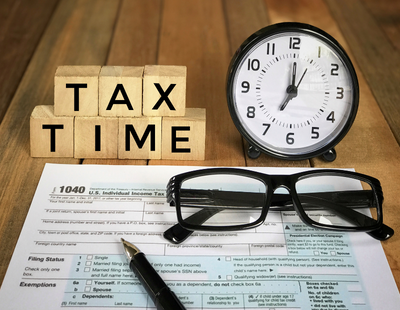- The income tax additional rate threshold is lowered from £150,000 to £125,140;
- Capital Gains Tax allowance drops from £12,300 to £6,000 (and to £3,000 in 2024);
- Dividend annual allowance reduces from £2,000 to £1,000 (and then £500 from 2024);
- On a positive note, the SEIS allowance increases from £100,000 to £200,000 enabling investors to put more into the scheme.
We are just one month away from a series of more onerous tax increases. Around 232,000 more people will be paying the top rate of tax, many allowances have been frozen until 2028 and the dividend and capital gains tax allowances are being decimated. Fortunately, there are still legitimate ways to reduce the tax you pay, from investing in pension and ISAs to crystallising capital gains liabilities now rather than next year.
If you are an experienced investor and are prepared to take more risk, consider investing in early-stage businesses through venture capital schemes such as VCTs, EIS and SEIS. Not only are they very tax efficient, but your money goes to entrepreneurial companies, which is great for the UK’s economic growth and job creation. Each offers a different mix of tax benefits. Which you go for will largely depend on circumstances and how much risk you’re prepared to take. As a rule of thumb, the greater the tax benefits, the higher the risk.
Venture Capital Trusts (VCTs) offer up to 30 per cent income tax relief, so on a £10,000 investment you could get £3,000 back. Returns are paid through regular tax-free dividends, which is a nice bonus. The allowance is a very respectable £200,000 a year.
Enterprise Investment Scheme (EIS) investments also offer up to 30 per cent income tax relief. There are no tax-free dividends, but one bonus here is that you can also defer chargeable capital gains you’ve realised. For as long as you stay invested in any EIS, you can forget about the CGT bill. It will only become payable once you come out of the EIS, unless you re-invest the money into another. The allowance is a whopping £1 million a year or £2m if you invest at least £1m into “knowledge intensive” companies.
The Seed Enterprise Investment Scheme (SEIS) is the real winner when it comes to tax savings. You receive up to 50 per cent income tax relief and you can also halve a capital gains tax bill. The allowance is more modest but still an extremely generous £100,000 (increasing to £200,000 next year). But that probably doesn’t matter too much when you consider a £100,000 investment could save you up to £50,000 income tax plus £14,000 capital gains tax.
Get back tax you’ve already paid
A valuable but often overlooked perk of EIS and SEIS investments (but not VCTs) is they allow ‘carry back’. As the name suggests, this means you can choose to offset the tax relief against the previous tax year and get back tax already paid.
However, there is a catch. To be able to carry back to the 2021/22 tax year, your money must be invested – and the shares allotted – by 5th April 2023. If this deadline is not met, you can of course still offset the tax relief against the current tax year.
Protect as much as possible of your portfolio from Inheritance tax
Pensions can be passed on to the next generation relatively tax efficiently. EIS and SEIS investments should be IHT free after two years too.
The greatest IHT threat probably comes from where you least expect it: your ISA. Contrary to what many think, ISAs are not IHT free. So, if you do nothing, up to 40 per cent of your fund could eventually be eaten up by tax.
An alternative is to invest in an AIM ISA, a managed portfolio of AIM shares that can be IHT free after two years. You still get the ISA benefits of tax-free income and growth for as long as you live, but you don’t need to worry about IHT on top. In addition to investing your £20,000 ISA allowance into an AIM ISA you can also transfer existing ISAs into an AIM ISA making that money inheritance tax free too.
Use your Capital Gains Tax Allowance
Currently, Individuals have a £12,300 annual capital gains tax allowance, meaning investors can make £12,300 in capital gains before becoming liable for capital gains tax. This allowance drops to £6,000 from April 2023, and to £3,000 from April 2024. The message is clear, use it or lose it. Investors in funds who are happy with their portfolio could consider selling a fund that’s performed well and buying something very similar, for instance you sell one US equity tracker and buy another.
The most important thing of all
If you’re planning to do anything this tax year and you spot an investment opportunity you like now is the time to act. Delay even by a couple of days and you might find your options are limited.
Popular VCTs are filling up fast, and a number of offers are very close to capacity. The deadlines for EIS and SEIS investments allotting this tax year are also looming.
* Alex Davies is CEO and founder of Wealth Club, the UK’s largest broker of tax-efficient investments *
Want to comment on this story? Our focus is on providing a platform for you to share your insights and views and we welcome contributions.
If any post is considered to victimise, harass, degrade or intimidate an individual or group of individuals, then the post may be deleted and the individual immediately banned from posting in future.
Please help us by reporting comments you consider to be unduly offensive so we can review and take action if necessary. Thank you.














.jpg)






%20(002).png)



.jpg)
.jpg)






Join the conversation
Jump to latest comment and add your reply
How does most of this work for portfolio landlords?
We can't pay rental income into a SIPP apart from about £2880.
We can't sell nice CGT friendly slices of houses.
We're catapulted into a higher tax band than we should be in due to being taxed on turnover not profit. Due to that any landlords with children lose their Child Benefit. Other landlords pay 60% tax on a genuine profit of little over £50000.
How exactly are we supposed to do any of these tax efficient things when the government and mortgage lenders are taking such a huge chunk of our fictitious profit?
I have to agree. Rising interest rates coupled with section 24 will kill at lot of interest in BTL. My rents in west london are rising sharply and now selective licencing at 750 a pop for 5 years for all BTL in borough of Ealing. EPC problems arrive in the not too distant.
it will only be when Government recognise BTL as a business that landlords can fully engage in proper reliefs and pension contributions etc. otherwise, there is a real crisis coming.
Ken, you are lucky £750. Is the minimum one / Selective license I have had them several times in the past only because they picked 3 Selective areas out of 18 same areas again & again so it didn’t apply to all the others so unfair, so I this is your first congratulations. The Additional license is £1100. The Mandatory one is £1300. + £50. per habitable room on top don’t ask me what that’s for. 5 years is not a long time they keep expiring rapidly. I have many redone 4 times, 2006,2011,2016, 2021 so don’t feel hard done by if you haven’t even done one and that’s the majority. When it was introduced it was £598. this allegedly not for profit Scheme which is what it’s supposed to be. So now a 4 room HMO is £1300 + £200. extra for fun or 5 rooms £1550. Application fee.
That’s only for the Computer Screen, now you’ll have to deal with the real costs getting the actual work done for Compliance that Digital don’t cut. Fire doors possibly frames, fire hinges, locks & handles with Euro thumb screws on inside, door closers, smoke seals, On ya your 3 Coates of paint. Hard wired interlinked fire detection, emergency lighting, monoxide detector, extra cooking facilities if more than 5 persons, everyone is a person full HM0 purposes if only a kid. Second Sink, then after all that no one cooking the fellow with the moped comes. Right you’ll need the 5 year DEICR and probably up grade and Certificate. All those trades need paying and not cheap.
Add Boiler service & Certificate annual, Alarms annual, emergency lighting annual, EPC and below “”C” higher fee, much more. Then they will write to your Tenants, your Solicitors, your Bank / lender, your wife and the Cat, did some one say there’s data protection Act. So you think it just a matter of apply & pay a fee dream on.
The best part is the Council’s got smart they couldn’t do this or cope with it. They sub-let it out to alternative Computer website but instead of charging you £598. Charge several hundreds more now they have their free money just sit there, add the other hundreds to pay for alternative people to do the work. Ah that’s easy now we will make it Borough Wide with the help of the Clo!n levelling Minister.
Please login to comment